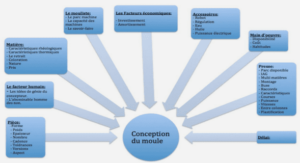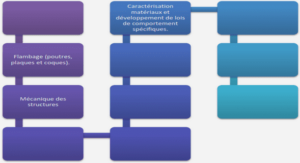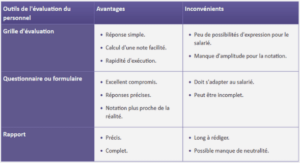Diagnostic of the Ibity New Protected Area
Protected areas in Madagascar
The IUCN defines protected areas as “a clearly defined geographical space, recognized, dedicated and managed, through legal or other effective means, to achieve the long-term conservation of nature with associated ecosystem services and cultural values” (IUCN 1994). In 1980, the « World Conservation Strategy » emphasized the need to protect the functioning of ecological processes and to maintain protected areas by emphasizing development needs (IUCN/UNEP/WWF 1980). Conservation efforts often try to take into account these considerations as well as general principles of ecology (including human ecology) along with both social and ethical factors (Holdgate 1991). Currently, the conservation of natural ecosystems can only be achieved by reaching a sustainable balance with local human populations and their demands on natural resources. Conservation objectives therefore require strategies that allow for managing an entire landscape, including areas dedicated to production and others to protection (Margules & Pressey 2000). The Code of Protected Areas in Madagascar (Code des Aires Protégées de Madagascar, COAP) (ANGAP 2001) follows as closely as possible this inclusive model in order to protect biodiversity and ecological habitats, conduct research, promote ecotourism, and contribute to the sustainable development of the populations living in the around protected areas, as well as contributing to regional and national economic development (Randrianandianina et al. 2003). In practice, however, this inclusive model remains very difficult to implement because of the complexities of each local situation, and as a consequence some targets are not fully achieved.
Physical setting of the Ibity
New Protected Area This New Protected Area (NPA) is located in Madagascar’s central highlands, 200 km southwest of the capital, Antananarivo, and 25km south of the city of Antsirabe (47°01’E 20°07’S (Figure I-2). The land belongs to the Malagasy state (and thus comprises «Terrain Domanial»), and there are no private holdings within the NAP itself. Ibity’s elevation ranges between 1400 to 2254m, which makes it the highest quartzitic massif in Madagascar. The climate is characteristic of tropical highlands, classified as Cwb (C : warm weather; w : dry winters; b : warm summers) using the Köppen classification system (Peel, Finlayson, & McMahon 2007), with cool and dry winters (June to October) and rainy summers (November to May). Average annual rainfall is 1583mm (based on data from 1961 to 1990; Meteorology Service of Ampandrianomby).
Biological characteristics of Ibity
Vegetation
In order to establish a vegetation map of the Ibity area, photo-interpretation of LANDSAT TM 1999/158-074 satellite images was used to make an initial assessment of the distribution of the various plant formations represented on the massif. The presence of these formations was then confirmed on the ground, and their physiognomy and floristic composition were described. An initial draft of the vegetation map was updated using the Atlas of the Vegetation of Madagascar (Moat & Smith 2007). Forty-six target species, defined as species found on Ibity and with a restricted distribution or endemic from Madagascar, Malagasy highlands, quartzitic massifs or Ibity, were selected from the Tropicos botanical database (www.tropicos.org/). To survey the selected target species, ten sites were chosen on quartzitic substratum from the topographic and geological maps, and from the vegetation map previously obtained in order to cover the main habitats of the massif. The inventory of target species was done in plots established at each site that varied in size from 20m×50m (1000m²) to 20m×250m (5000m²), depending on the available area of each vegetation type. The distribution of target species was added to the vegetation map created previously (Birkinshaw et al. 2006). Because grasslands are dominant on the massif (occupying 98.5% of the land area), a study was specifically carried out to describe their species richness and composition. Five sites for each of four types of herbaceous savannas, defined according to their dominant grass species (see Results below), were studied. At each site, a species inventory was conducted using the minimum area protocol of Bouxin and Gautier (1982): species were recorded on an area of 1m², then 2m², then 4m², 8m², 16m², etc. until the minimum area was reached, i.e., until no new species were encountered. Species identifications were confirmed in Antananarivo at the reference herbarium of the Tsimbazaza Botanical and Zoological Park and at the offices of the Missouri Botanical Garden (MBG), using the Flore de Madagascar et des Comores (Humbert 37 1936) and the “Flora of the grasses of pasture and the cultures of Madagascar” (Bosser 1969).
Fauna
In order to determinate animal target species, which are keys for conservation plan (e.g. endemics species or endangered), a fauna inventory was carried out on Ibity by various consultants who covered all habitat types (see Birkinshaw et al. 2006 for details).
Current trends and impacts at Ibity
Before the process of establishing the Ibity NPA initiated, fire was believed to be the main cause of degradation and threat for diversity on the massif, as shown by interviews with members of local communities (villagers, local authorities, etc.) (Birkinshaw et al. 2006). In October 2003, Kiboy, a smaller massif situated to the north of Ibity, was struck by a fire at the end of the dry season. The burn was very aggressive because of the high fuel load and low fuel moisture at that time of year (Knapp et al. 2005; Govender, Trollope, & Van Wilgen 2006). This event offered an opportunity to carry out a pair of one-year ecological studies, one on plant community structure and composition (Randriatsivery 2005) and one on plant phenology (Rasoafaranaivo 2005), in order to begin assessing the effects of fire on Ibity’s vegetation.
Impacts of fire on Ibity’s herbaceous grassland plant community
The ecological effects of fire on grassland vegetation were studied with respect to structure and species composition, richness and biomass. Three sites of Loudetia simplex grasslands on quartzitic soil were chosen at altitudes between 1665 and 1755m in the burned zone, and three additional sites were examined in the unburned zone (control). At each site, five 100m transects were established, along which 100 points were read with a pin at 20cm intervals (for a total of 500 points/site, pin-transect methodology). At each point, the species touching the pin were noted, along with the number of contacts and the height at which each species touched the pin. In order to compare primary production (kg/ha/year) in the burned and unburned areas, plant biomass was sampled every month for one year following the fire 38 by cutting the vegetation at 5cm above the ground in two 1m² quadrats at each study site (12 samples); fresh and dry biomass were weighted.
Impacts of fire on plant phenology
To assess the effect of fire on plant phenology, ten Malagasy endemic species were selected for this study, and individuals were monitored every two months for one year starting in December 2003, two months after fire: Aloe capitata var. quartzicola H. Perrier (Xanthorrhoeaceae), Dialypetalum compactum Zahlbr (Campanulaceae), Distephanus polygalifolius (Less.) H. Rob. & B. Kahn (Asteraceae), Dioscorea hexagona Baker (Dioscoreaceae), Xerochlamys bojeriana (Baill.) F. Gérard (Sarcolaenaceae), Pachypodium brevicaule Baker (Apocynaceae), Pentachlaena latifolia H. Perrier (Sarcolaenaceae), Philgamia glabrifolia Arènes (Malpighiaceae), Abrahamia ibityensis (H. Perrier) Randrian. & Lowry, ined. (Anacardiaceae), and Uapaca bojeri Baill (Phyllanthaceae). These ten species were monitored in the four following vegetation types, depending on the habitat in which they are found: sclerophyllous forest, rocky outcrop vegetation, herbaceous grassland, and woody grassland. Monitoring was carried out in twenty 20m×50m permanent plots, ten each in the burned and unburned areas (one plot/species/area). In each plot, 50 individuals of each species were randomly chosen and marked. The phenological stage [vegetative (Vg), in floral bud (Fb), in flower (Fl) and in fruit (Fr)] was noted for each species. The number of seedlings of each of the ten species was also estimated.





